Climate change directly threatens the future of global produce due to its noticeable impacts on worldwide agricultural systems.
Increases in temperature, changes in rainfall patterns, and more frequent extreme weather events reduce crop yields and affect food production.
Certain crops may become unsuitable for cultivation in regions that become too dry or too hot, leading to decreased crop diversity.
Alterations in the pattern of pests and diseases due to changing climate conditions may also pose serious challenges to food production.
Consequently, food availability and food security may become compounding issues, potentially leading to geopolitical instability.
Therefore, urgent and concerted actions are required at both national and international levels to mitigate climate change effects and to make agricultural practices more sustainable and resilient.
- Climate change is significantly impacting global crop yields.
- Changing temperatures and rainfall patterns are affecting crop growth.
- Extreme weather events are increasing, posing a threat to agriculture.
- Food security is under potential threat due to decreased crop diversity.
- Active mitigation strategies are required to tackle these adverse effects.
We are not stopping here; there is still much to be discussed. We will be shifting our focus to other crucial topics that are intimately connected to climate change and global farming.
In the following sections, I will guide you through the broader web of climate change impacts on agriculture, including the socio-economic repercussions and the role of modern technology in agricultural adaptation. The knowledge you gain will provide a well-rounded understanding of this complex issue.
Stay tuned to explore how climate change shapes the global food system and what we can do to secure a sustainable future.
Contents
- What Is Climate Change’s Impact?
- How Are Temperatures Affecting Crops?
- Will Rainfall Patterns Influence Yields?
- Are Extreme Weather Events Increasing?
- How Will Crop Diversity Suffer?
- What Areas Will Lose Crops?
- Can Pests and Diseases Multiply?
- Is Food Security Under Threat?
- Could Political Instability Result?
- How Can We Mitigate Effects?
- The Bottom Line
What Is Climate Change’s Impact?
In Short: Climate change is significantly impacting global agriculture, affecting crop yield and quality, fostering extreme weather events, enhancing pest populations, and disrupting water resources. This not only alters the global food landscape, increasing food prices and threatening future food sustainability, but also impacts ecosystems, threatens coastal agricultural lands, and challenges livestock adaptability.
Ponder this for a moment – what is the magnitude of climate change’s impact globally? Notably, there’s no straightforward answer as the implications are incredibly vast and far-reaching.
A prominent issue, central to our topic, is the effect of climate change on global agricultural produce. It is indeed transformative, serving as a pivotal lever in shaping the future landscape of food production and distribution.
Global warming for instance, caused by increased concentrations of greenhouse gases, affects farming conditions. Slight temperature variations can significantly influence the growth and productivity of many crops.
Moreover, erratic rainfall patterns and increasing instances of extreme weather events are now common. These are a direct result of climate change and pose significant challenges to consistent farming.
Next, let’s visualize a few significant impacts of climate change on agricultural activities around the world.
- The increase in temperature reduces the yield and quality of crops.
- Extreme weather events like floods, hurricanes, and drought can wipe out entire crops.
- Burgeoning populations of pests and diseases pose a potent threat to crop health.
- Limited access to fresh water for irrigation due to dried up water resources and or unpredictable rain patterns.
Climate change’s effects aren’t limited to the fields and farms. Does it not seem that these changes consequently alter the global ‘foodscape’?
Rising costs and limited supply directly influence market prices of essential food commodities, making staple foods unaffordable for many, which is a worrying reality.
The global population is expected to reach 9 billion by 2050. Can we feed the world sufficiently under these changing climate conditions?
Climatic changes not only induce variations in crop yield but also affect the natural balance of ecosystems. This dramatic shift is influencing the life cycle of plants and animals, and the delicate balance of their habitats.
Another associated threat is the rise of sea levels due to the melting of polar ice, which imperils coastal agricultural lands. This puts low-lying, densely populated countries like Bangladesh or Vietnam at significant risk.
Pro Tip: Climate change significantly impacts global agricultural produce, affecting farming conditions, disrupting rainfall patterns, triggering extreme weather events, and putting the yield and quality of crops, as well as livestock, at risk.
Global warming is inducing more frequent and harsher heatwaves. Can our livestock, adapted for millennia to specific climates, withstand these changes?
As we all know, climate change does not aim a bullet, but scatters a swath of buckshot across global agriculture. It holds an ambivalent promise of upheavals and adaptations, challenges, and opportunities, making speculation about our food future an intricate task.
How Are Temperatures Affecting Crops?
In Short: Global warming is significantly impacting agricultural systems, with increased temperatures and extreme weather events threatening crop health and productivity. These climatic changes not only jeopardize food security worldwide, but also create new challenges like the migration of invasive species, requiring urgent climate action and strategies for agricultural resilience and sustainability.
The global rise in temperatures, popularly known as global warming, has proven to be a substantial challenge to our food systems. Climate change is already having a noticeable influence on the conditions necessary for agriculture.
Crops are sensitive and respond rapidly to changes in the weather and climate. They depend on a delicate balance of specific environmental conditions, don’t they?
Increasing temperatures are meddling with this balance, posing a real threat worldwide. But, how and why are these implications evident?
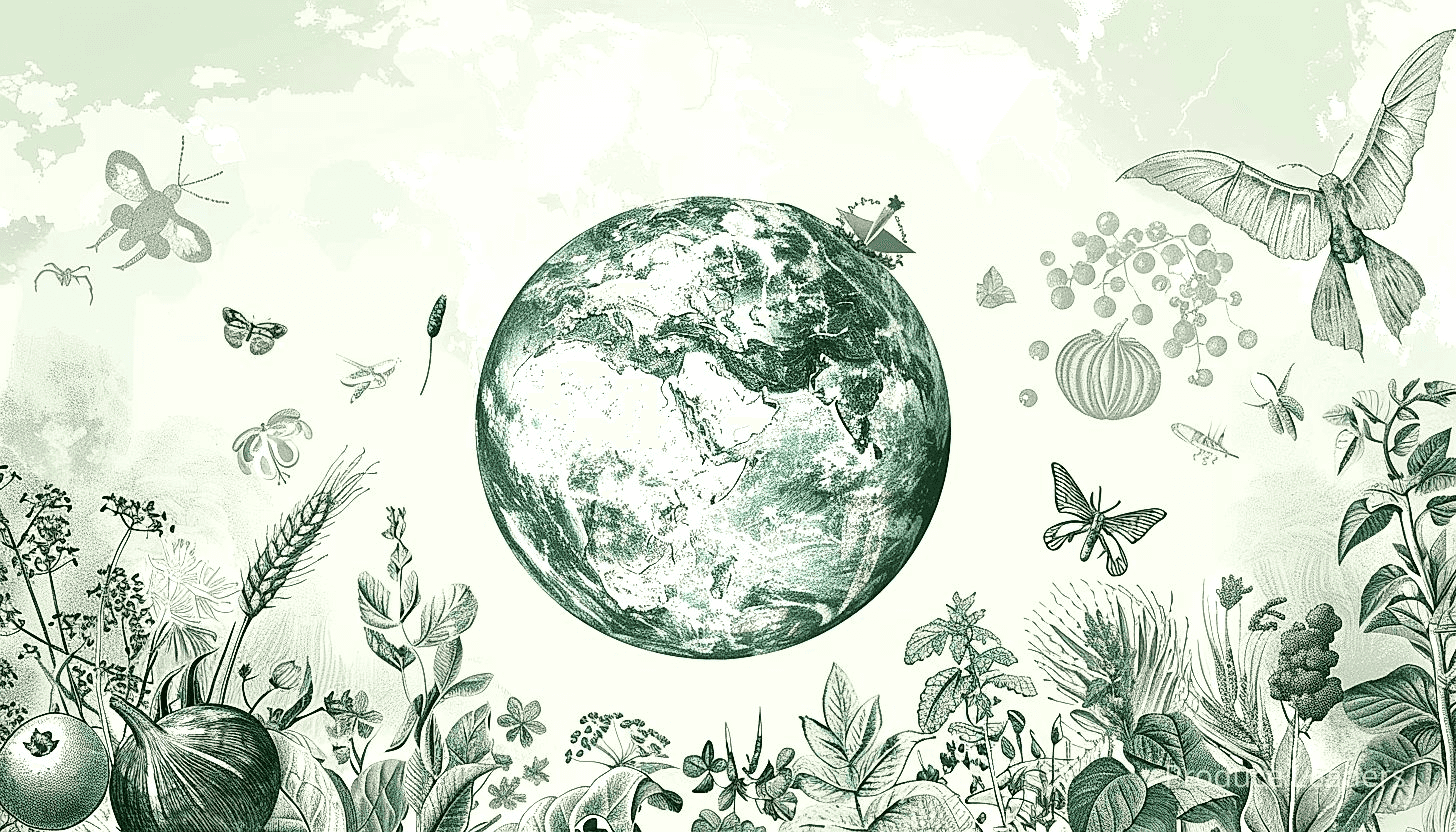
Heat waves, for instance, can dramatically reduce crop yields. It is not just about the rise in average temperatures, but extreme weather events that result from climate change can be devastating.
They have a short-term impact by destroying matured crops at large scales, but also long-term implications by reducing the quality of future yields in those areas. Compounding these consequences are prolonged droughts that often accompany these heat waves. Can you imagine that effect?
Before heading into the specifics of the temperature changes’ signals, it’s crucial to remember that these effects can vary significantly, depending on the type of crop and the region. The list below reflects some general trends:
- Warmer winters, resulting in pests not dying off due to less frequent hard freezes.
- Inconsistent rainfall patterns, potentially leading to either droughts or flooding.
- Shorter cool periods, curtailing the necessary dormant phase for some fruits and vegetables.
- More intense and frequent heatwaves, causing heat stress and reducing crop productivity.
These changes in climate patterns can seem mild and manageable, at first glance. But, have you considered that these shifts could lead to invasive species and new pests that further threaten crop health?
Elevation in temperature could create the perfect conditions for the migration of invasive species. New diseases and pests may find these regions more suitable, therefore risking crops that have never encountered these threats. A scary thought, isn’t it?
The impact of these temperature changes is not only a problem for farmers, but also consumers. It risks food security and access to affordable produce for people around the globe.
In facing such a predicament, it is imperative to understand and anticipate these impacts. A crucial component of this is investing in resilience-building measures within our agricultural systems.
Pro Tip: Increasing temperatures due to climate change are disrupting the delicate balance of environmental conditions needed for agriculture, posing a worldwide threat to crop productivity and thus, global food security.
But, does this crisis not also present an opportunity to rethink our farming practices? Is it not time to strive for sustainability in agriculture?
At its core, understanding how temperatures are affecting crops boils down to understanding the dire need for swift and efficient climate action. Our future of global produce may depend on it, but wouldn’t you agree that it is worth the effort?
Will Rainfall Patterns Influence Yields?
In Short: Agricultural yields are significantly influenced by rainfall patterns, with both insufficient and excessive rain negatively impacting crop health and productivity. The effects of climate change on the frequency, intensity, and timing of rain further complicate farming practices and necessitate adaptive strategies.
Consider this for a moment. The effectiveness of agricultural activities profoundly hinges on rainfall patterns.
Is that surprising? I want you to remember, every drop of rain counts.
Not only does rain provide much-needed moisture for plant growth, but it also affects the microbial life in the soil. But how do these affect yields?
Let me put it this way, rainfall patterns can be a blessing or a curse to farmers.
Erratic and extreme episodes of rainfall, result in flooding, which can devastate entire crop fields. Does that spell disaster for food security? Definitely.
On the flipside, insufficient rainfall will dry up the land. Doesn’t water shortage also spell doom?
Keep in mind, both extremes negatively impact plant health and productivity, inevitably leading to lower yields. So it’s a delicate balance, isn’t it?
Let me break down some key ways rainfall patterns affect yields:
- The timing and distribution of rain often dictate planting decisions.
- Inadequate rain may cause harvest failure.
- Excessive moisture leads to disease and pest problems.
What we’re trying to say here is, a typical farm year is filled with highs and lows simply based on rain.
Changing rainfall patterns due to climate change present an alarming concern. Did you know that?
Climate change affects the frequency, intensity and timing of rainfall. This means that ‘normal’ rain isn’t quite so normal anymore, is it?
Unfortunately, this means that year-round planning and risk management strategies become more complex. Imagine how farmers will be able to cope with this?
Pro Tip: Rainfall patterns play a significant role in global produce yields, with both extremes – insufficient rainfall and flooding – negatively impacting plant health and productivity, leading to lower yields.
Undoubtedly, rainfall patterns play a significant role in global produce yields. Each growing season brings its own set of weather challenges and would test farmer’s resilience.
And indeed, climate change forces us to devise adaptive and effective strategies to combat its effects on rainfall patterns. Are you ready for that?
Are Extreme Weather Events Increasing?
In Short: Global weather data indicates an undeniable rise in extreme weather events like hurricanes, floods, and wildfires, underscoring the need to distinguish between regular weather patterns and human-induced climate shifts. Addressing the escalating trend of extreme weather conditions, driven largely by increasing global temperatures, is vital to reducing the impact of such events and curbing the severity of global warming.
Gravitating towards a more crucial aspect of climate change involves deciphering the palpable rise in extreme weather events. Increased temperatures, excessive storm outbursts, and escalating sea levels are few of the mainstream attributes associated with global warming, no?
Have you ever pondered the striking rate at which hurricanes, floods and wildfire events seem to be flourishing, and at what scale? The frequency and magnitude of these extreme weather events do not just pose distressing uncertainties; they’ve become alarming indicators of drastic climatic shifts.
And what does the meteorological data suggest?
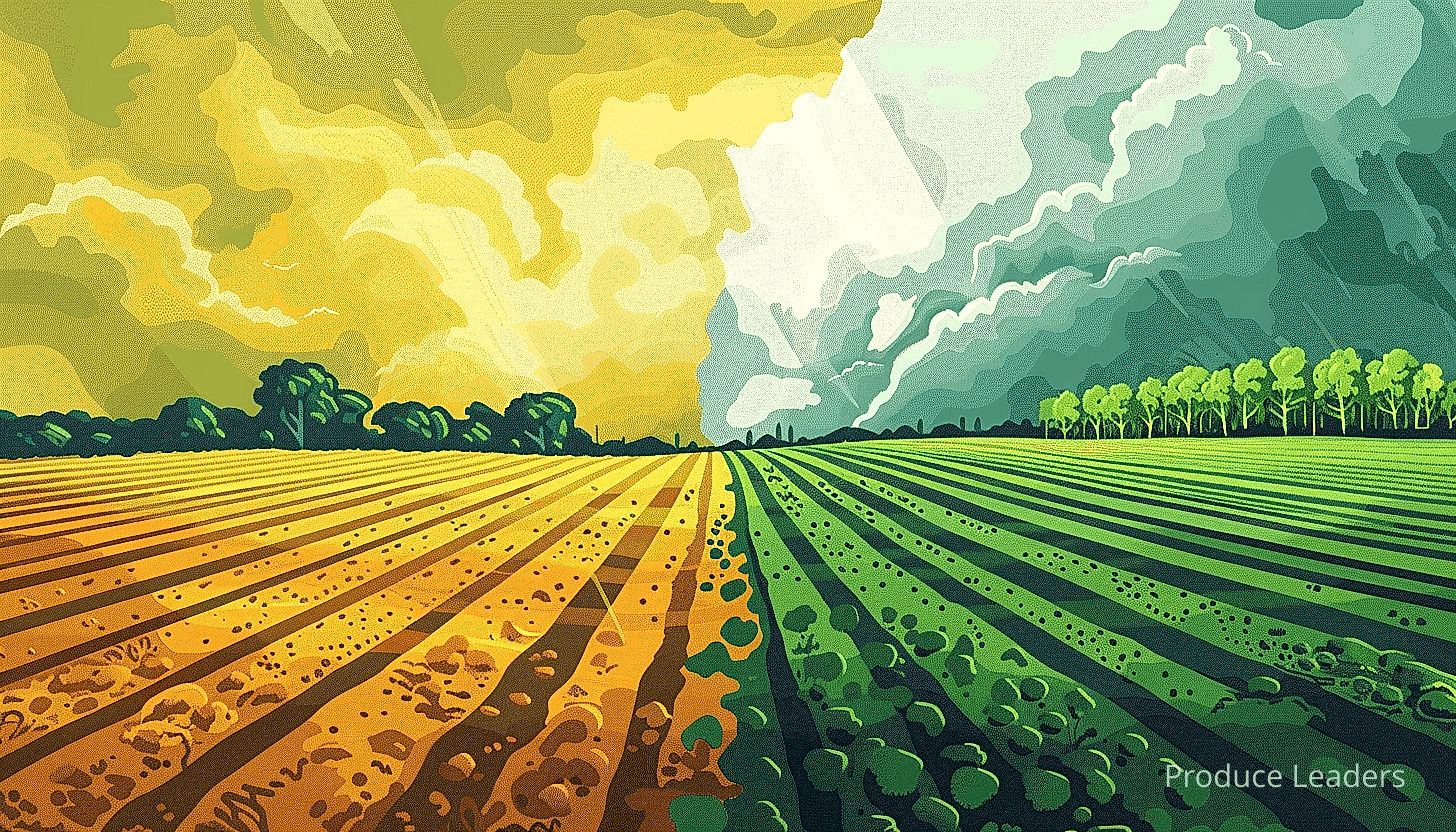
Remarkably, the evidence insinuates the surge to be unquestionably real. Statistics gathered globally reveal a clear trend of steady escalation in the number of such extreme episodes.
But are we confusing regular weather patterns with changing climatic conditions here?
A yen for precision demands distinguishing between the two.
We’ll delineate these aspects through a brief list:
- Weather: The short-term conditions of the atmosphere, the forecast for the coming day or week.
- Climate: The long-term weather context in a specified area, counting averages and variations.
A single storm or heatwave should not be misconstrued as a direct outcome of climate change. Yet, a series of such escalating occurrences urges us to reevaluate our comprehension of the climatic model.
Isn’t it astonishing that the most severe heatwaves ever noted have all occurred in the last decade? Coincidence hardly seems to be the perfect explanation for this scenario.
The rise in average global temperature, caused directly by human activities, has augmented the probability as well as intensity of heatwaves. The distressing predicament of the polar ice caps does little to ease this assertion.
Higher temperatures escalate the rate of surface water evaporation, generating conducive conditions for more frequent and intense storms. Intensifying heat content in oceans is a recipe for stronger hurricanes attached with greater rainfall.
Recall the intensified frequency of wildfires worldwide. Could they be seemingly unrelated to climate change?
On the contrary, higher temperatures and prolonged droughts spurred by climate change kindle the likelihood for more robust wildfires.
It is hence important to observe and understand the precise correlation between human-induced climate change and the increasing instances of significant weather events. Ignoring this correlation might be an expensive oversight, wouldn’t you agree?
Pro Tip: To understand the rise in extreme weather events, it’s vital to distinguish the correlation between human-induced climate change and these increasing instances, not confusing regular weather patterns with changing climatic conditions.
Although painting every weather event with a broad brush of climate change is risky, overwhelming scientific consensus persuades us to recognize the escalating trend of extreme weather as a reverberation of global climate change.
Our most constructive trajectory to limit extreme weather events is by attempting to curb the intensity of global warming. Hard to argue with that one, right?
How Will Crop Diversity Suffer?
In Short: Climate change threatens the diversity of our agricultural crops by influencing growing seasons and reducing the geographic range of where crops can prosper. This could lead to a loss of traditional crop varieties, increased dependence on resilient crops, and increased vulnerability to pests and diseases.
Over the years, humans have domesticated and grown a large variety of crops. Consequently, our diets and cuisine diversity have thrived.
But is this bounty at risk? Let’s dig in into how climate change is set to disrupt our agricultural practices.
Shifts in temperature and precipitation will undoubtedly influence the growing seasons of numerous crops.
This has the potential to reduce the geographic ranges where certain crops can grow.
When crops are confined to narrower geographic ranges, there will be less genetic diversity within those crops.
Unfortunately, this trend isn’t hypothetical. We’re already witnessing its effects.
Take coffee for example. The area suitable for its production is becoming smaller. Do we comprehend the scope of what this means?
To illustrate the main effects of how crop diversity will suffer, we can list some of the key impacts.
- Loss of traditional crop varieties: Climate change means certain agro-climatic conditions will no longer support the crops traditionally grown there.
- Dependence on a small number of crops: As certain crops become more difficult to grow, agriculture may be forced to rely heavily on limited, resilient varieties.
- Increased vulnerability: With fewer crops, the risk of a pest or disease wiping out an entire harvest increases.
The coffee industry is scrambling to develop climate-resistant variants. But this is a costly and time-consuming process.
Not all crops may have this luxury. Think about that.
Take, for instance, the thousands of indigenous varieties of rice in India.
These might be forgotten and lost forever. A great loss to our agricultural heritage, wouldn’t you agree?
Besides, it’s not just our diets and cultures at stake here.
A diversity of crops is crucial for the health and resilience of agricultural ecosystems by providing a variety of outputs and services.
Greater crop diversity is akin to having a diversified portfolio in finance. Doesn’t it make sense to spread the risk?
Crop diversity, quite like biodiversity, isn’t merely about preserving the variety for posterity.
It is the life support system for our agriculture. A robust defense against the trials and tribulations of nature and pests.
The prospect of massive loss of crop diversity is daunting.
It is an SOS call for action, isn’t it?
While the future may look bleak, it is worth remembering that humans are innovators in essence.
Important: Climate change is set to disrupt agricultural practices, potentially reducing the geographic ranges where certain crops can grow, leading to less genetic diversity within crops, and increasing the risk of a pest or disease wiping out entire harvests.
We can adapt our agricultural practices, discover new crop varieties, and hopefully, withstand the pressure from climate change.
But, it will require a colossal, united human effort. After all, we all have a stake in the future of global produce, right?
What Areas Will Lose Crops?
In Short: Climate change is altering agricultural landscapes globally, causing concerns for crop loss particularly in Africa, South Asia, Australia, southern US, and even colder regions like Norway, Sweden, and Russia. These alterations call for the integration of climate resilience in farming practices and policies to ensure food security and preserve rural livelihoods.
The progressing speed of climate change has brought drastic alterations to our ecosystems. Among which, various agricultural landscapes are witnessing a significant pressure which leads to crop loss.
How are we supposed to feed the world when the fields turn infertile, you wonder? certain agricultural places are bound to suffer more than others.
The areas expected to lose crops include regions that currently produce large quantities of food, but are expected to experience severe heatwaves, unpredictable rainfall, and extreme storms. Crop loss, it seems, is standing on our doorstep.
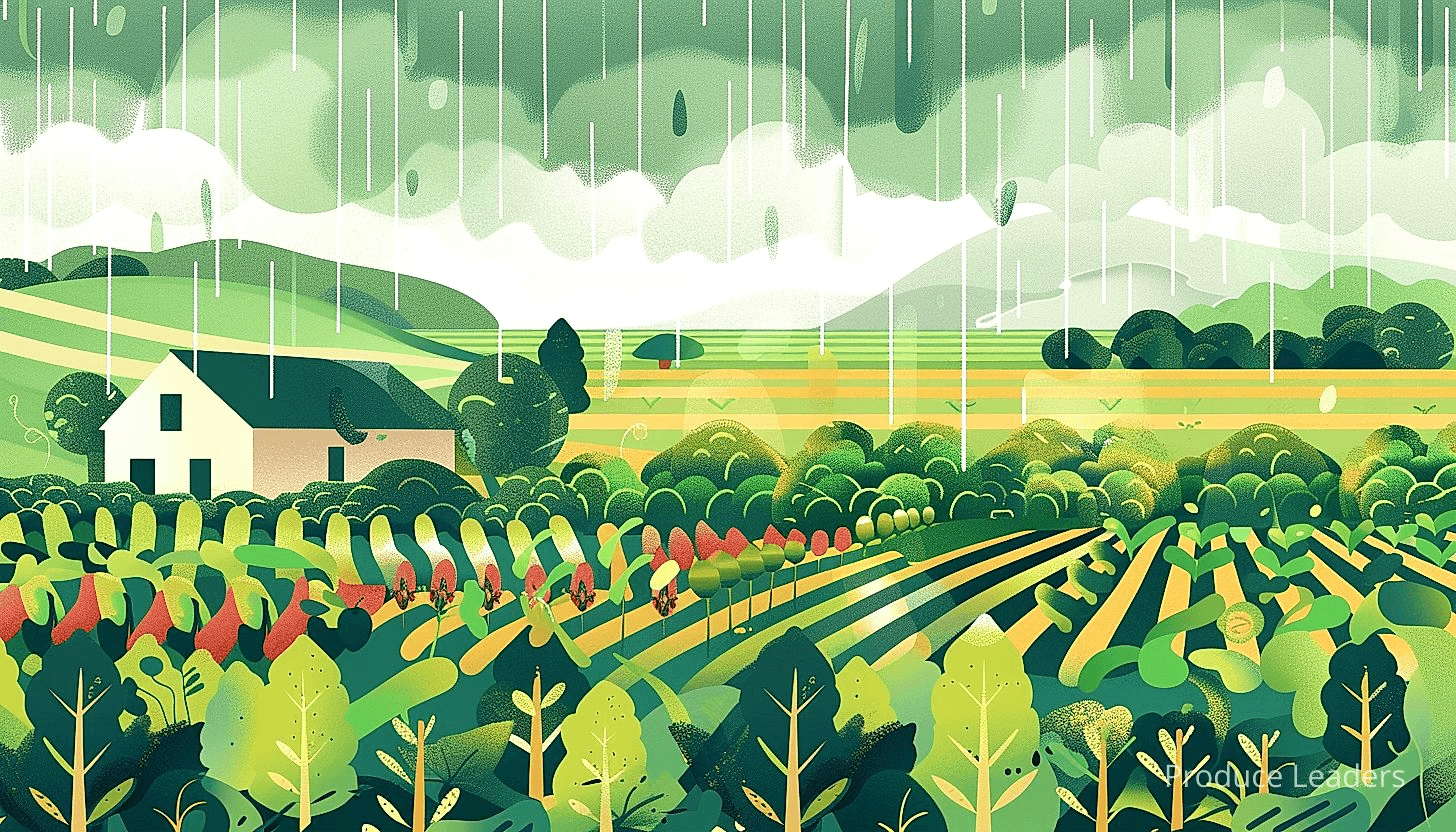
Why these regions, what’s special about them? Firstly, hot and humid parts of Africa and South Asia entail significant risks.
These regions, such as Sub-Saharan Africa and India, are largely dependent on rain-fed agriculture. The anticipated erratic weather patterns and decreased precipitation will cause significant reductions in crop yield.
Well, what about regions like Australia and the Southern United States? These places are already hot and dry.
Climate change is expected to increase both the frequency and severity of droughts. This leads to more water shortages and more wildfires, which consequently will adversely affect crop production.
Now, let’s shed some light on regions that have considerable agricultural output but are susceptible to losing crop due to climate change.
Following regions are in danger:
- Sub-Saharan Africa – potential drought, heatwaves and erratic rainfall.
- India – anticipated erratic weather patterns and decreased precipitation.
- Australia – more frequent and more severe droughts.
- Southern United States – increased risk of water shortages and wildfires.
Let me tell you, it’s not just high-temperature areas that we need to worry about. What about colder regions, how will they be affected?
Places like Norway, Sweden, Russia– regions characterised by relatively cold climates are also predicted to see a decrease in crop yields. A change in their stable, cold climates will lead to crop stress.
Such impacts of climate change on regions with different climates highlight that no one is safe. Unpredictability seems to be the new norm, doesn’t it?
Let’s remember that agriculture is more than just producing food, it is also about rural livelihoods, economy, and stability. How will this sudden change in crop availability impact the lives of those who rely heavily on it?
We don’t have all the answers yet. But one thing is certain, climate change is transforming our agricultural landscapes and challenging our capacities to adapt.
This is a wake-up call. Considering the important importance of food security, isn’t it high time that we incorporate climate resilience into our farming practices and policies?
Can Pests and Diseases Multiply?
In Short: Climate change, particularly warmer temperatures, triggers an exponential growth of pests and plant diseases by influencing insects’ life cycles. Although the situation seems alarming, the increasing recognition of this issue is fueling research and innovation for sustainable solutions.
Climate change has been a purple patch for the exponential growth of pests and plant diseases. But, what specifically about climate change is causing this?
Primarily, it’s the way that warmer temperatures affect the life cycle and behavior of insects. Insects are cold-blooded, making their survival and reproductive rates sensitive to changes in temperature.
When the climate gets warmer, pests can proliferate faster. You may ask, “What about extreme heat?” Well, extreme heat can indeed kill some pests, but many adapt and thrive.
Also, there’s this golden but worrying nugget: some crop pests can practically go invisible to the farmer’s eye and wreck enormous havoc. Let’s take some time to unpack this.
Introducing the list of pests we should be wary of:
- Stem borers: These pests, barely visible disguised as pieces of straw, hollow out plant stems, causing massive yield losses.
- Whiteflies: Almost invisible, they suck juices from a plant, causing stunting, yellowing, and even death. Not to mention they also spread crop diseases.
- And let’s not forget about aphids, those tiny, green specks that can infest an entire field in a matter of days.
Disturbing, isn’t it? But there’s more to the story. We have to factor in the role of plant diseases.
In the face of increasing temperatures, the spread of plant diseases becomes another cause for concern. Many crucial food crops are vulnerable to fungal, bacterial, and viral diseases that thrive in warmer climates.
These diseases are not just deadly for the plant but for the pests that feed on them. Let me tell you, imagine a scenario where pests are multiplying and becoming more resilient, and at the same time, plants are becoming weaker due to diseases. Although dreadful, it’s a very likely scenario considering our changing climates.
Now, can these pests and diseases be managed? The answer is not that simple.
Pro Tip: Keep an eye out for pests such as stem borers, whiteflies, and aphids which can multiply quickly in warmer temperatures due to climate change, damaging crops and spreading diseases.
Firstly, traditional methods of pest and disease control, although effective in some cases, may become ineffectual in the face of such swift changes. Secondly, turning towards genetically engineered crops which could withstand such pests and diseases is a possible solution, but its ethical implications and long-term effectiveness need to be thoroughly evaluated.
In short, does climate change lead to the multiplication of pests and diseases? The short and alarming answer is yes. But the silver lining is the awareness of this concern leading to research and innovation for sustainable solutions, which may certainly guide us towards a better future.
Is Food Security Under Threat?
In Short: Climate change presents a significant danger to global food security, with volatile weather patterns and rising temperatures potentially affecting food production. The solution involves strengthening our agricultural systems and innovating the sector, working together to secure a sustainable future for global produce.
Climate change, does it really pose a significant threat to global food security?
As we continue to witness volatile weather patterns, increased temperatures, and frequent extreme weather events, the implications are evident on the global agricultural sector.
Agriculture, after all, highly depends on weather.
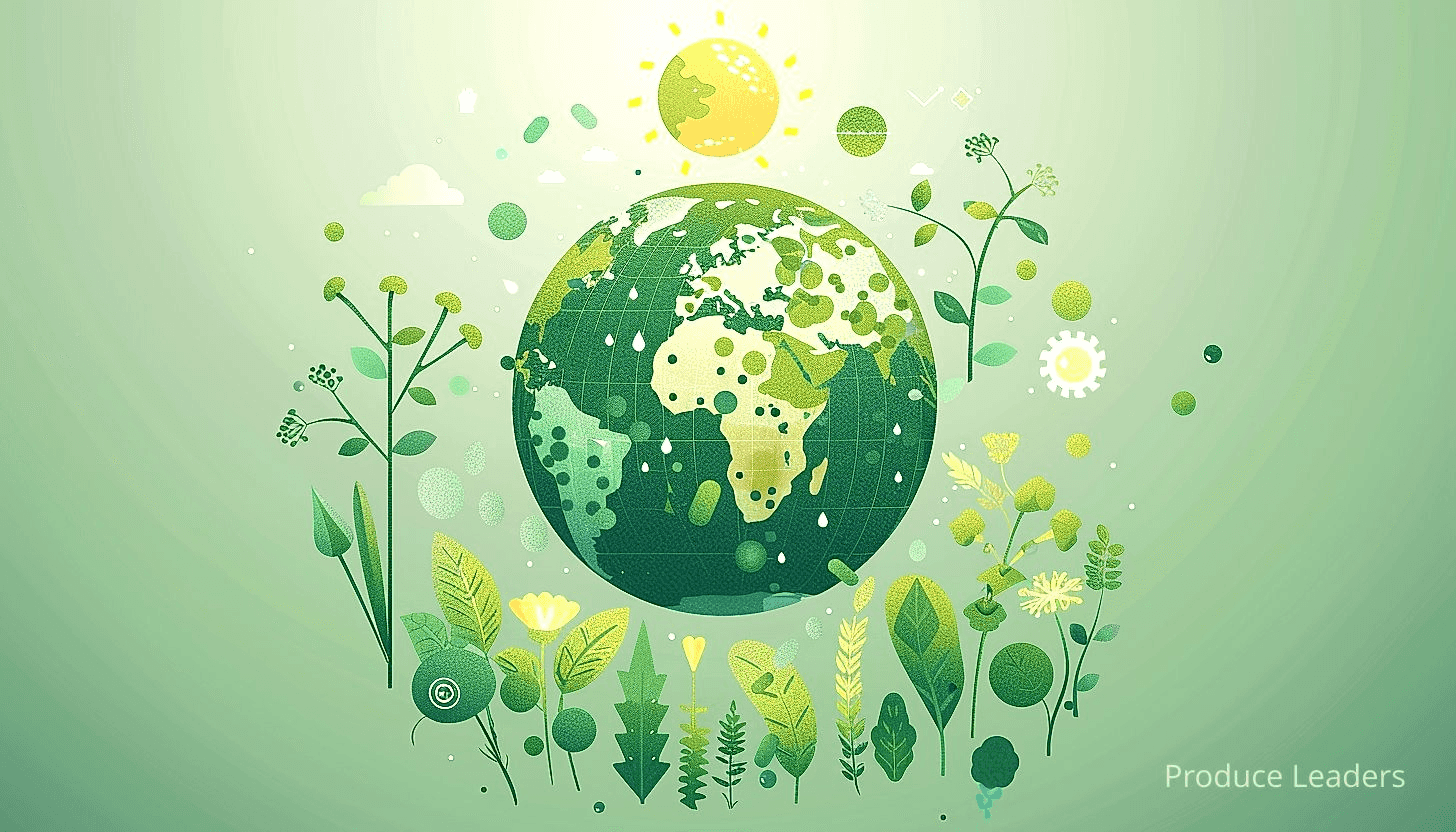
With the current climate inconsistencies, there are fears that food production systems could be severely affected.
This situation brings us to a crucial question, is our ability to provide enough food for everyone under significant threat?
Isn’t it alarming to think about the possibility of increased food scarcity?
What about the predicted increase in the frequency and intensity of droughts and floods?
These scenarios, unfortunately, portray a worrying future food security.
Now, let’s have a look at some of the key issues illustrating this threat:
- Rising temperatures: High heat levels could lead to decreased crop yields thus affecting food production.
- Extreme weather patterns: Unpredictable weather events can destroy crops and thus reduce the global food supply.
- Water scarcity: Access to fresh water is important for irrigation, but with the decrease in rainfall, it becomes a challenge.
These are only a few examples.
There are many more factors related to climate change that may pose threats to global food security.
This can be quite a frightening prospect, don’t you think?
Despite this, there’s a need to stay hopeful and take action to address these challenges.
What can we do?
For starters, every nation, every farmer, and every citizen can contribute towards a sustainable farming system to counteract the effects of climate change.
Facing this concern head-on, rather than avoiding it, is the first step to overcoming the detrimental effects of climate change on global produce.
But how well are we prepared?
The connection between climate change and food security is a challenge that we must face fairly and squarely.
The key is to strengthen our agricultural systems and increase their resilience to climate change.
The foreseeable future might seem daunting when we think about the potential threats to our food security.
Can we think of this challenge as an opportunity to bring innovative interventions and solutions into the agricultural sector?
Indeed, while this threat is real, our response to it needs to be even more formidable.
It’s not a simple task, but one that we can’t afford to ignore.
Important: The connection between climate change and food security is a challenge that we must face fairly and squarely, with the key being to strengthen our agricultural systems and increase their resilience to climate change.
The threat to food security is a significant concern for all of us.
Yet, if we work together, we can change the narrative and secure a sustainable future for global produce and for us all.
Could Political Instability Result?
In Short: Climate change poses a potential risk to global food production, which could lead to political instability, resource conflicts, economic volatility, and mass human migration. Understanding and mitigating these impacts is crucial for sustaining not only our physical environment but also our social and political structures.
When considering the potential impacts of climate change on the worldwide supply of produce, one may wonder if this could lead to political instability.
Global food production is directly linked with climate conditions, and its vulnerability to climate change can lead to significant repercussions.
Weather abnormalities, such as droughts or floods, can directly affect crop yield in key food producing regions.
Let me tell you, could these agricultural disruptions lead to political unrest?
Think about it from this perspective. Food scarcity, price increases, and ultimately food insecurity could incite social discord.
When basic human needs are threatened, history has shown this often leads to political movements.
As agricultural regions are threatened by changing climates, it’s logical to presume an increase in the competition for resources.
Isn’t it plausible then, that this could lead to political tensions between nations?
Consider the impact of a region suddenly unable to feed its population due to a failed harvest.
Could those powerful pressures possibly ignite political strife?
In this brewing storm, it’s worth discussing a few potential political consequences of climate-related changes to global produce.
- Firstly, conflict over resources might escalate as nations scramble to meet the dietary needs of their populations.
- Next, economies dependent on agriculture-based exports may experience unpredictability.
- Lastly, mass human migration caused by unbearable living conditions might put strain on hosting countries.
This isn’t a doomsday prediction, but an exploration of possible political repercussions in a world grappling with climate change.
Note, this isn’t meant to instill fear, but to prompt thoughtful consideration on the issue.
It’s crucial to evaluate and understand the intricate ways in which climate change can affect not only the physical environment, but also social and political structures.
Moving forward, it’s equally imperative that we work together on a global scale to mitigate the impacts of climate change.
Whether this is through adopting more sustainable agricultural practices, or by working towards international diplomacy and cooperation, our collective future may very well depend on it.
How Can We Mitigate Effects?
In Short: To mitigate the effects of climate change on global produce, we must promote sustainable farming practices, support local farmers, consume in-season produce, and reduce waste. Each individual, from consumers to large agricultural corporations, has a role to play in securing the future of global produce.
Coping with the onslaught of climate change is a paramount concern for our world. It’s especially relevant when discussing the sustainability of global produce.
The misuse of resources is contributing significantly to the problem. How can we adjust our approaches to decrease this?
Firstly, we should start by promoting sustainable farming practices. This includes the reduction of non-renewable resources and environmental protection.
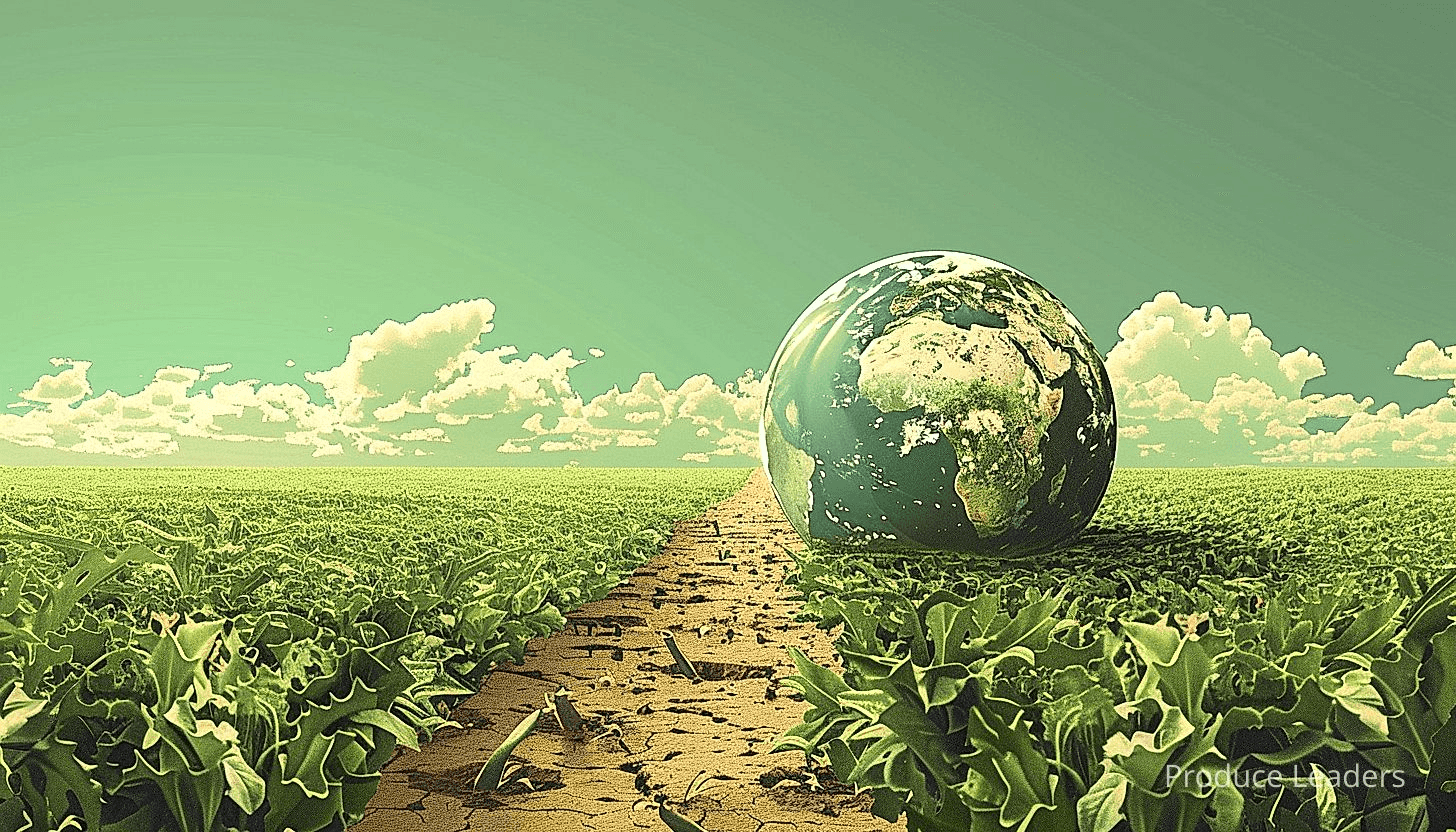
For instance, we can encourage the use of organic farming. These practices can significantly reduce the environmental harm ordinarily caused by agricultural activities.
Is it not true that every agricultural practice leaves marks on the environment? It’s crucial that these impacts are minimal and manageable.
Consumers can also play a role in mitigating the effects of climate change on global produce. How, you might ask?
By consuming locally grown produce. This reduces the energy used for transportation, thus decreasing the net harmful emissions.
But the change can’t end there. Cutting down on food waste is equally important in mitigating climate change effects.
In the United States alone, nearly 40% of food grown never makes it to people’s plates. Isn’t that staggering? And wouldn’t decreasing these numbers also have a big effect?
To further illustrate how we can reduce the impacts of climate changes on global produce, here are some concrete steps:
- Support local farmers and farmer markets.
- Buy in-season produce, this can reduce the need for long-distance transportation and carbon emission.
- Promote and adapt organic and sustainable farming practices.
- Reduce, reuse, and recycle to decrease waste production.
Efforts to mitigate the effects of climate change on agriculture are shared responsibility. Everyone has a role to play.
From individual consumers to large agricultural corporations, the changes start with us.
Addressing the impacts of climate change is no easy task. But together, we can make a significant difference.
Pro Tip: To mitigate the effects of climate change on agriculture, promote sustainable farming practices, consume locally grown produce to reduce transportation emissions, and cut down on food waste.
By altering our habits, supporting sustainable initiatives, and employing new agricultural practices, we can help secure the future of global produce.
It’s a matter of survival. Not only for us, but for the generations to come.
The Bottom Line
Issues concerning climate change are coupled with grave potential impacts on global agriculture, with temperature changes causing crop failure in various regions.
Perturbations in weather patterns, particularly shifts in precipitation and more frequent extreme weather events, may lead to a decrease in crop yield and an increase in crop failure.
Moreover, alterations in the biodiversity of crops due to these changes could propagate ripple effects in the agriculture sector.
Certain areas, especially those already suffering from climate adversities, may face drastic reductions in crop production, exacerbating food insecurity issues.
An increase in temperatures could provide a more conducive environment for pests and diseases, leading to an upsurge in crop loss.
The threat to food security is real, with climate change jeopardizing the agricultural backbone of numerous nations.
Political instability could very much be a sequel, as competition over dwindling resources may lead to conflict.
However, mitigative strategies such as sustainable agricultural practices, creating climate-resilient crops, and strengthening political and economic systems can help prepare and protect our global food supply from climate change.




















